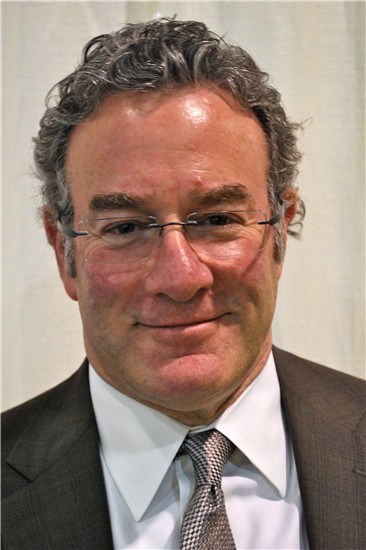Sponsored Content

By Bob Schultz
CEO, Vision One Credit Union
April 14, 2021
Small practices have traditionally been difficult to sell, yet they represent a significant number of independent optometric practices in the U.S. Without a reliable means of transition, these practices can end in closure.
The small practice used to be defined as $300,000 or less in collected revenues when I first joined Vision One Credit Union 20 years ago. Today it is upwards of $500,000, perhaps more. As there is no formal definition of a small practice, it is more appropriately defined by its characteristics:
• Requiring less than five OD days per week to staff the clinic.
• No revenue growth.
• Inability to compete effectively in the market.
• Less than full scope exams with minimal to no medical.
• Inability to provide an owner OD a full wage based on an associate OD pay scale.
Vision One Credit Union is the only financial institution solely dedicated to independent optometric practices. It is all we do. Founded in 1951, by ODs for ODs, we are not for profit with an all OD, all volunteer Board.
Achieving optometric practice growth and value requires continuous investment and a long-term banking relationship. We take the time to know you, your goals and capabilities. Vision One Credit Union, because your team matters. You will appreciate the difference.
Our full banking services include:
Practice Transitions – Practice purchase, startup, partner buy in, exit strategy development (with affiliates) and execution.
Practice Growth – Purchase or startup additional location(s), relocation, remodel, equipment loans.
Wealth Building – Commercial real estate, location consolidation (rollups). A full range of deposit services including interest checking, financial planning (with affiliate).
Time Savings and Convenience – We offer full-scope financial services needed by an optometric practice. As the only banking organization asked to present Management CE at major optometric events, we know the business of optometry.
(800) 327-2628
Monday through Friday
7:30 a.m. to 4:30 p.m. (Pacific Time)
www.VisionOne.org
The trade-off to achieve higher personal income is usually at the expense of updated instrumentation and décor, which reduces the ability to attract new patients. Unpaid family members may work in the practice. The practice may have no rent expense if the OD owns the real estate without debt.
When an owner tries to sell a small practice, the buyer, lender and appraiser will deduct market-based expenses for staffing and rent. The buyer and lender will additionally factor in the cost to upgrade equipment and premises. When finished, there is insufficient cash flow to make the acquisition debt payments and for the buyer to make a living. Practices in this situation are considered “non-economic” and are candidates for closure.
Finding Value in the Small Practice
The value in a small practice is the patient base. The trick is how do you eliminate the overhead expenses and avoid upgrade costs to create positive cash flow. The answer is to merge into the buyer’s practice location which is already staffed, improved and equipped. Additional income can be generated by offering full-scope exams, reducing referrals outside of the practice.
To further reduce investment risk, the acquisition of the small practice can be structured to not require financing from Vision One or any other third-party lender. The seller gets paid for the sale of the records from seller’s patients’ revenue as they are seen in the buyer’s practice. No patients, no payment. A seller can help assure a higher payout by working in the buyer’s practice for a defined period to persuade patients to come in.
Benefits to Buyers
• Accelerated growth through acquisition, particularly if organic growth has been slow or nonexistent.
• Eliminate a competitor in the market area.
• Perform a “rollup” (consolidate locations and see the new patients in the buyer’s practice, eliminating the seller’s location and related costs).
• Increase doctor efficiency. Often the buyer’s ODs can see a few more exams per day.
• Increase premises, dispensary and equipment efficiency as more patients and revenues will be driven through the buyer’s practice facility without increasing occupancy costs, inventory or adding instrumentation. This assumes the buyer has existing capacity for higher volume.
Small practice acquisitions rarely work as stand-alone facilities. Therefore, the best economics lie in this “in market” acquisition and rollup strategy.
Accomplishing a small practice acquisition and rollup requires management skills and support from a consultant and attorney with experience in this type of transaction. There are some unique details of this structure that must be handled correctly to make the transition work properly. Do not short the consulting piece. Save your effort for the rollup, focusing on the transition, integration and operation of a combined larger entity. This will provide a reasonable management challenge.
Our mission at V1 is to enhance private practice optometry through innovative financial solutions. Our only market is independent optometric practices, since 1951. We constantly study industry problems. In most instances, we find workable solutions. If you are interested in this or other exit or growth strategies, you can contact me at BSchultz@VisionOne.org to discuss your needs.
Vision One Credit Union…Because Your Team Matters!
 Bob Schultz is the CEO of Vision One Credit Union. To contact: BSchultz@visionone.org
Bob Schultz is the CEO of Vision One Credit Union. To contact: BSchultz@visionone.org

























